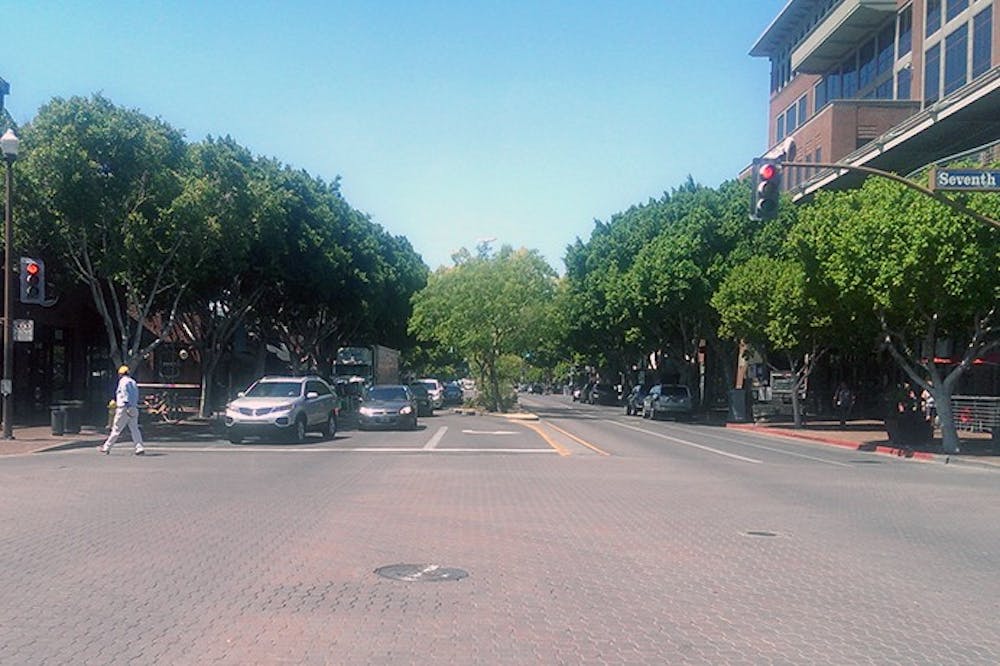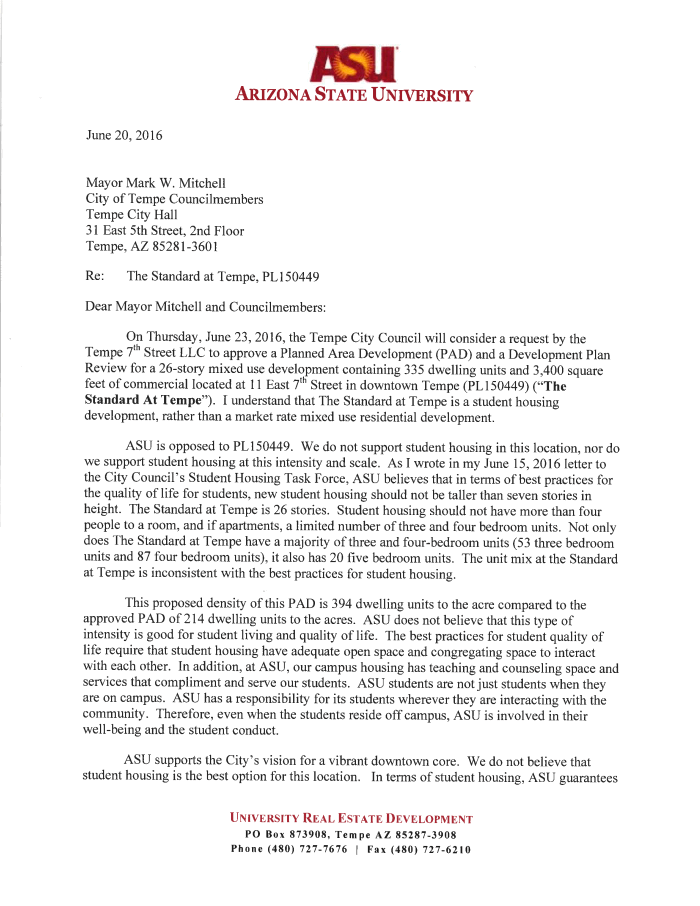The Tempe City Council, in 5-2 and 4-2 votes, rejected two proposals for high-rise student housing developments at their June 23 meeting.
Council members who voted against the proposals cited a need to stay on track with their vision for downtown Tempe — one which does not have room for high-rises intruding on pedestrian traffic, Councilwoman Lauren Kuby said.
The Standard at Tempe
One development — dubbed The Standard at Tempe — was proposed for Mill Avenue and Seventh Street. Kuby said the project would have impeded the continuing work the city is doing to grow and be pedestrian-friendly.
Downtown Tempe is not an area which lends itself to high-rises, because they can impede on pedestrian walkways, Kuby said.
"In the case of The Standard, it was 26 stories," she said. "Twenty-six stories."
One of Kuby's issues with placing student housing closer to the downtown area than the University itself is the seasonal economic burst it will bring. Business in the area will increase during the school year, but quickly die down when students go home for the summer, she said.
ASU was opposed to the proposal, as well. John Creer, assistant vice president for University Real Estate Development, asked the council members in a June 20 letter not to approve the proposal.
Although the University did not provide a statement on the matter, the letter shows its stance was diametrically opposed to the development moving forward.
In the document, Creer cited some of the same concerns Kuby did, writing that the building was too tall to safely house students.
"ASU believes that in terms of best practices for the quality of life for students, new student housing should not be taller than seven stories in height," Creer wrote.
The Newman Center proposal
The other development was proposed by the Newman Center, and would also extend to Mill Avenue and Seventh Street with two 16-story towers.
Neither development was in line with a mature downtown, Kuby said.
Kuby said continuing to plan downtown Tempe with their vision for a mature, pedestrian-friendly area is essential to making sure the decisions the City Council makes are smart ones.
Councilman Kolby Granville voted in favor of both proposals. His vote on The Standard, though, was a vote to give the developers another week to come back with another pitch.
The 5-2 vote against The Standard was one of the only times the City Council has denied a developer a second pitch, Granville said.
Granville's colleagues struck down the Newman Center's proposal in a 4-2 vote, after the developers had come back with a new proposal.
"Candidly, I wasn't thrilled on the student housing," he said about The Standard. "But that's not what I voted yes on."
Granville was much more enthused with the potential of a student housing development from the Newman Center, which would have been heavily grounded in residents with a common faith.
"It's really about building small communities within a large group," he said. "Faith is a great way to do that."
What is in the City Council's vision
Although the City Council denied two student housing developments for being too tall, council members unanimously approved a nine-story residential development with a Whole Foods for the northwest corner of Ash Avenue and University Drive.
David Clock, the development manager on the project for Forum Real Estate Group, said their vision closely lined up with the Tempe City Council's vision for the area, and are going to make the development emblematic of Tempe.
"We want this development to be very Tempe-esque, if you will, and Tempe-centric" Clock said.
Kuby said the development is what the downtown area needs, not only because it has a grocery store and is planned to serve as a community hub, but because the planning and development were executed thoughtfully.
"It can destroy neighborhoods if development isn't done properly," she said.
Reach the reporter at jwbowlin@asu.edu or follow @mrjoshuabowling on Twitter.
Like The State Press on Facebook and follow @statepress on Twitter.





